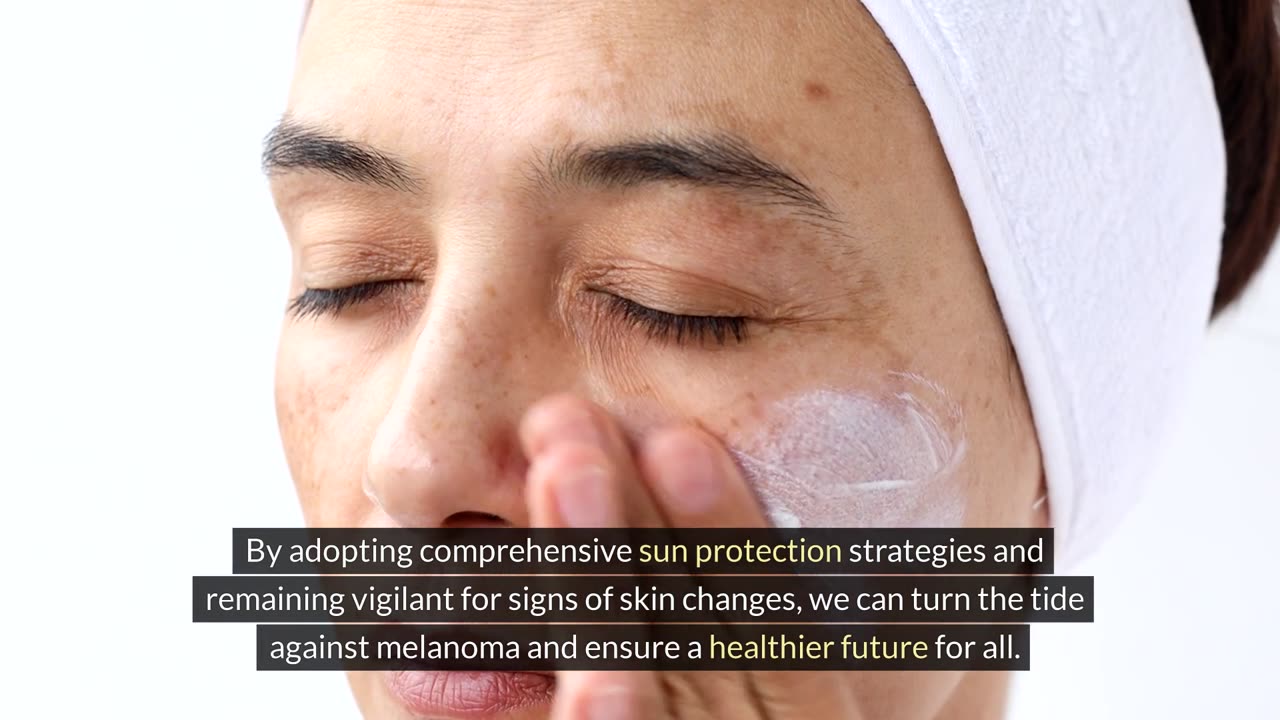Premium Only Content

Melanoma on the Rise: Why the UK Needs to Rethink Sun Safety
A Growing Epidemic
Melanoma skin cancer cases in the UK are climbing at an alarming rate, prompting urgent calls for increased sun safety measures. Cancer Research UK (CRUK) projects a record 20,800 melanoma diagnoses this year, a significant jump from the annual average of 19,300 between 2020 and 2022. As rates of this potentially deadly skin cancer continue to surge, it's crucial to understand the causes, demographics affected, and the steps needed to prevent further cases.
## The Alarming Statistics: A Nationwide Surge
### Rising Numbers Across the Board
CRUK’s latest analysis reveals a staggering 30% increase in melanoma cases over the past decade, from 21 to 28 cases per 100,000 people. This rise is not isolated to a single age group but spans all demographics, with particularly steep increases among older adults. For those over 80, diagnoses have escalated from 61 to 96 cases per 100,000 people over the last ten years.
### A Closer Look at Younger Adults
While older adults exhibit the most significant rise in cases, younger adults aged 25 to 49 are also seeing an uptick, from 14 to 15 cases per 100,000 people. This younger cohort tends to be more aware of the risks associated with UV exposure, yet they are not immune to the rising trend. The data underscores the necessity for all age groups to adopt rigorous sun protection measures.
## Unpacking the Causes: Why Are Melanoma Cases Increasing?
### The UV Radiation Factor
CRUK attributes nearly nine out of ten melanoma cases to excessive UV radiation. This includes exposure from the sun as well as artificial sources like tanning beds. The dramatic rise in cases suggests that despite better awareness, many individuals are still not adequately protecting themselves from harmful UV rays.
### The Impact of Lifestyle Changes
The increase in melanoma cases can also be linked to lifestyle changes over the decades. The boom in cheap package holidays starting in the 1960s made sun-drenched vacations accessible to the masses. This shift, combined with a cultural emphasis on tanned skin as a beauty standard, led to more people spending extended periods in the sun without adequate protection.
### Demographic Shifts and Aging Population
The UK’s aging population is another contributing factor. As people live longer, they accumulate more UV exposure over their lifetimes, increasing the risk of developing melanoma. The significant rise in cases among those over 80 highlights the long-term effects of sun exposure and the importance of protection throughout life.
## Prevention: Steps to Reduce Risk
### Sun Safety Guidelines
Preventing melanoma involves adopting comprehensive sun safety habits. CRUK offers several key recommendations:
- **Seek Shade**: Stay in the shade between 11 am and 3 pm when the sun’s rays are strongest.
- **Avoid Burning**: Never allow your skin to burn, as this increases melanoma risk.
- **Cover Up**: Wear protective clothing, including wide-brimmed hats and long-sleeved shirts, along with sunglasses to shield your eyes.
- **Use Sunscreen**: Apply at least factor-30 sunscreen regularly, especially during prolonged outdoor activities.
- **Protect Children**: Ensure children are adequately protected, as early UV damage can have long-term effects.
### The Importance of Early Detection
Spotting melanoma early can significantly improve survival rates. CRUK advises regular self-examinations and consulting a GP if you notice any unusual skin changes, such as new or changing moles, sores that don’t heal, or areas of skin that look abnormal. Early detection and treatment can be life-saving.
## The Role of Awareness and Education
### Public Health Campaigns
Increasing public awareness through education campaigns is vital. These campaigns should emphasize the importance of sun safety and the risks associated with UV exposure. They can also correct misconceptions, such as the idea that sunburn is just a temporary inconvenience rather than a serious health risk.
### Leveraging Technology
Technology can play a significant role in raising awareness and encouraging protective behaviors. Mobile apps that track UV levels, alert users to high-risk periods, and remind them to apply sunscreen can be effective tools in the fight against melanoma.
## Hope on the Horizon: Advances in Treatment and Survival Rates
### Progress in Melanoma Treatment
Despite the rise in cases, there is hope. Advances in medical research have significantly improved melanoma treatment and survival rates. Michelle Mitchell, CRUK’s chief executive, highlights the substantial progress made possible by research. Almost nine in ten adults diagnosed with melanoma skin cancer in England now survive for ten years or more, demonstrating the impact of early detection and advanced treatments.
### The Path Forward
To continue this progress, it is essential to invest in ongoing research and support healthcare systems in diagnosing and treating melanoma. By prioritizing both prevention and treatment, the UK can work towards reversing the current trend and reducing the burden of melanoma on individuals and the healthcare system.
A Call to Action
The rising incidence of melanoma skin cancer in the UK is a pressing public health concern that demands immediate attention and action. By understanding the causes and implementing effective prevention strategies, we can curb this alarming trend. It’s crucial for individuals to adopt sun-safe habits, for public health campaigns to continue educating the population, and for ongoing research to drive advancements in treatment. Together, we can ensure that fewer people face the challenges of melanoma and that more lives are saved through early detection and effective care.
-
 25:38
25:38
Producer Michael
15 hours agoLuxury Souq's MULTI-MILLION DOLLAR Watch Collection!
68K5 -
 17:06
17:06
Sleep is CANCELED
20 hours ago10 SCARY Videos To Keep You Up All Night!
44.7K2 -
 2:37
2:37
Canadian Crooner
1 year agoPat Coolen | Let It Snow!
27.6K9 -
 2:44
2:44
BIG NEM
11 hours agoWhat's Really Behind the Fake Alpha Male Epidemic?
23.5K4 -
 57:20
57:20
State of the Second Podcast
7 days agoThe Inventor of Bump Stock Fights Back! (ft. Slide Fire)
15.9K5 -
 1:04:12
1:04:12
PMG
1 day ago $11.69 earned"I’ll be DRONED for Christmas!"
58.9K12 -
 23:38
23:38
RealitySurvival
1 day agoBest Anti-Drone Rounds For Self Defense
34.7K5 -
 57:43
57:43
barstoolsports
19 hours agoBest Shot Wins The Game | Surviving Barstool S4 Ep. 7
221K10 -
 1:52:24
1:52:24
Kim Iversen
14 hours agoLuigi Mangione Charged With TERRORISM | Liz Cheney Accused Of WITNESS TAMPERING, Faces 20 YEARS IN JAIL
125K164 -
 6:50:10
6:50:10
Akademiks
15 hours agoJay Z says he aint NEVER been friends w/ DIDDY! Bhad Bhabie lost her man? Travis Hunter Down Bad?
125K14